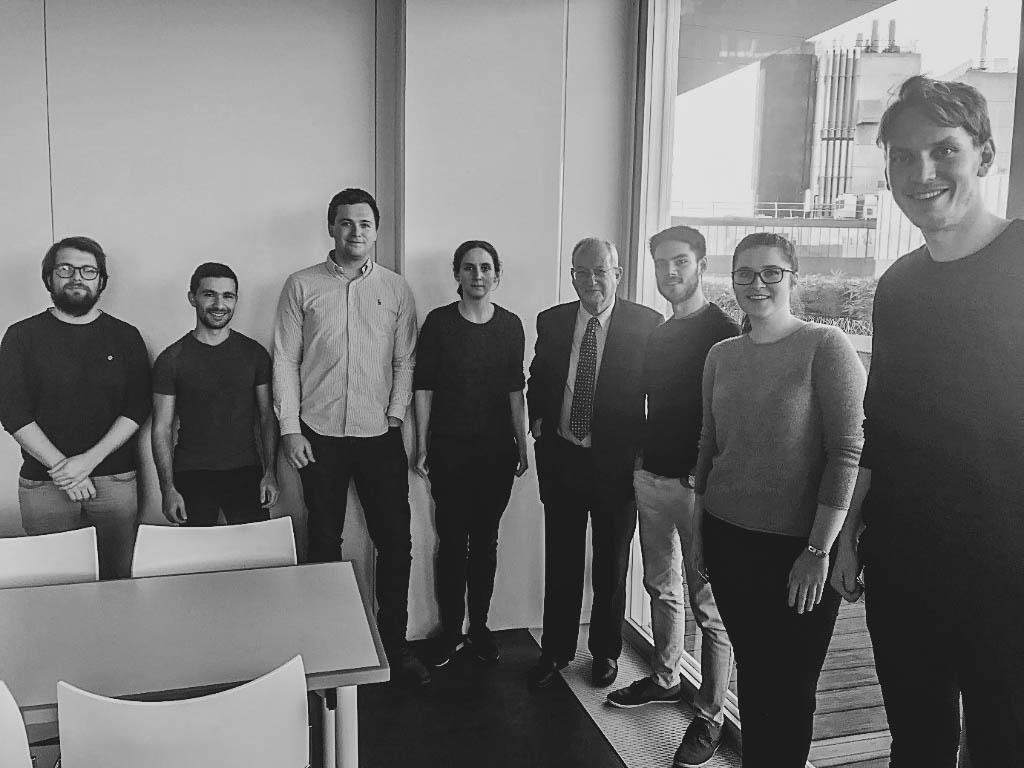
Lord Sainsbury meets with PhD students from SWC and GCNU
By April Cashin-Garbutt, MA (Cantab)
Lord Sainsbury met with students on the PhD programmes at Sainsbury Wellcome Centre (SWC) and Gatsby Computational Neuroscience Unit (GCNU). After outlining their background and areas of interest, the students described their experience of the PhD programmes at SWC and GCNU and their motivations for studying here.
The strong connection between experimental and theoretical neuroscience was a key theme that came to light and Lord Sainsbury gave a brief history of the Gatsby Charitable Foundation’s work in the neuroscience field. He described the benefits and synergies of bringing people from these related fields together in the same building.

[Left to right] Stephen Lenzi, Michael Arbel, Matthew Phillips, Kirsty McNaught, Lord David Sainsbury, Jorge Menendez, Lea Duncker, Jesse Geerts
The flexibility of the laboratories at Sainsbury Wellcome Centre allow for many different types of experiment to be carried out, which is crucial in the current landscape where technology is advancing at a rapid rate.
Lord Sainsbury described how the plant science laboratories, set up in the 1980’s, were driven by technology, particularly advances in genetic engineering. In a similar way, the current leaps in technology in the neuroscience field were also discussed and Lord Sainsbury remarked that this is a very exciting time to be a neuroscientist.
Computational neuroscience is going to be key to furthering our understanding of neural circuits and behaviour as we are now at a point where there is a wealth of data and the challenge will be interpreting this data in a way that enables us to understand the underlying algorithms in the brain.
With SWC and GCNU located in the same building, the PhD students and researchers benefit from shared laboratory spaces, which enhance collaboration between computational and systems neuroscientists. The PhD programmes also involve teaching elements with students from both SWC and GCNU.
Lord Sainsbury highlighted the value of having a centre with strengths in both theoretical and experimental neuroscience in order to help tackle the difficult problem of understanding how brain circuits process information to guide behaviour.